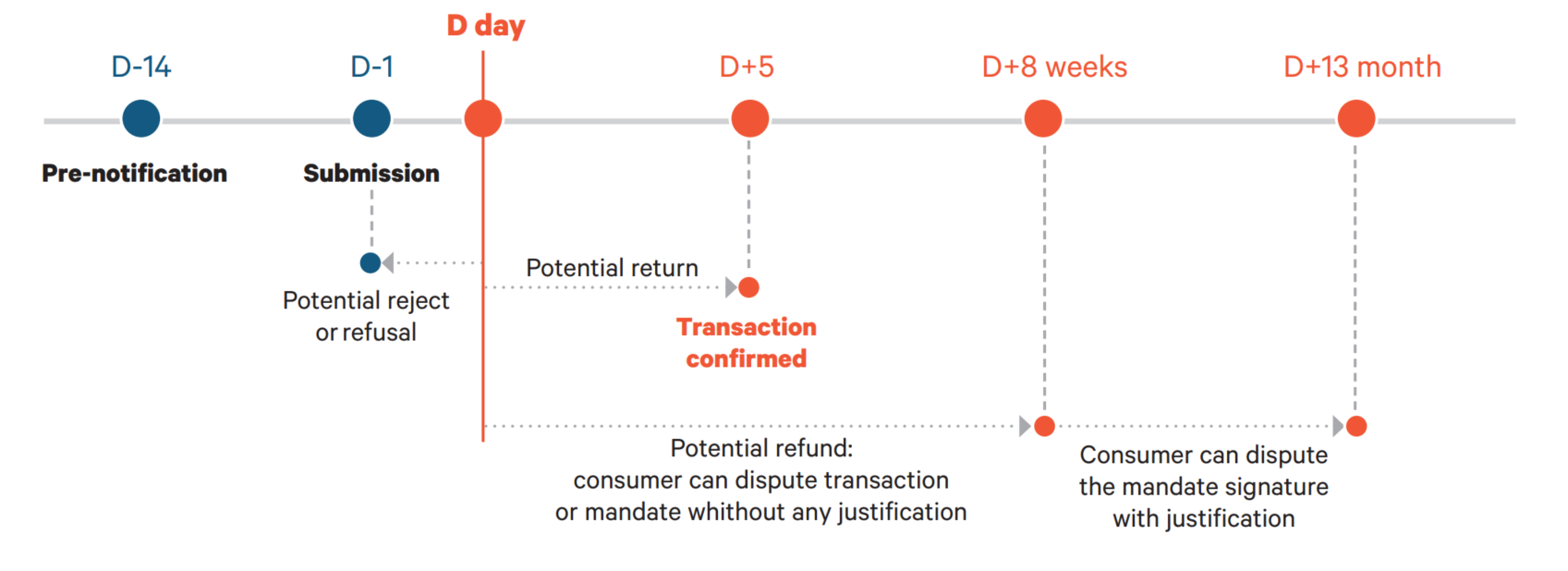Checkout the below SEPA Direct Debit Timeline explained:


- D-14: Pre-notification for recurrent Direct Debits;
- D-2: The merchant initiates a SEPA DD – the payment has status Open. If the Direct debit request fails for technical reasons (e.g connection time out), the payment status moves to Failed with ReasonCode and Reason. This is not an incident (R-transaction), it is only a technical failure of the request;
- D-1: The provider submits the SEPA DD into the network. If the SEPA DD is initiated early in the morning, then it will be submitted in the network in the same day D-1;
- D: The D day is known as the Execution day for a SEPA Direct Debit – funds are transferred from debtor’s bank to the merchant’s SEPA DD account.;
- D -> D+5: the payment remains Open unless an incident (R-Transaction) is reported. If an incident – reject, refusal, return – is registered, a notification for status Failed with ReasonCode and Reason (including the R-Transaction code) will be sent to the merchant;
- D+6: If no incident occurred until D+5, the transaction is settled and the SEPA DD updates to status Success. Now the merchant can provide the product/service to the customer;
- D+6 -> D+8 weeks / D+13 months: If the customer does not recognize the Direct Debit, he can claim the money back in 8 weeks, no questions asked and up to 13 months, if the customer’s bank agrees. This situation is also considered an incident (R-Transaction). If this happens, you will receive a Reversed notification with ReasonCode and Reason (including the R-Transaction) which you should properly handle on your side.
All days should be considered banking days!
Pre-notification:
Debtor pre-notification: is a 14 days notification period (this can be reduced upon debtor agreement).
This pre-notification must include the following information: the payment due date, the payment amount, the Unique Mandate Reference and the merchant Creditor Identifier. There is no requirement regarding the method of communication, meaning that this can be done through agreement on General Terms and Conditions, it can be solely written on an invoice, it can be displayed in an online customer account.
